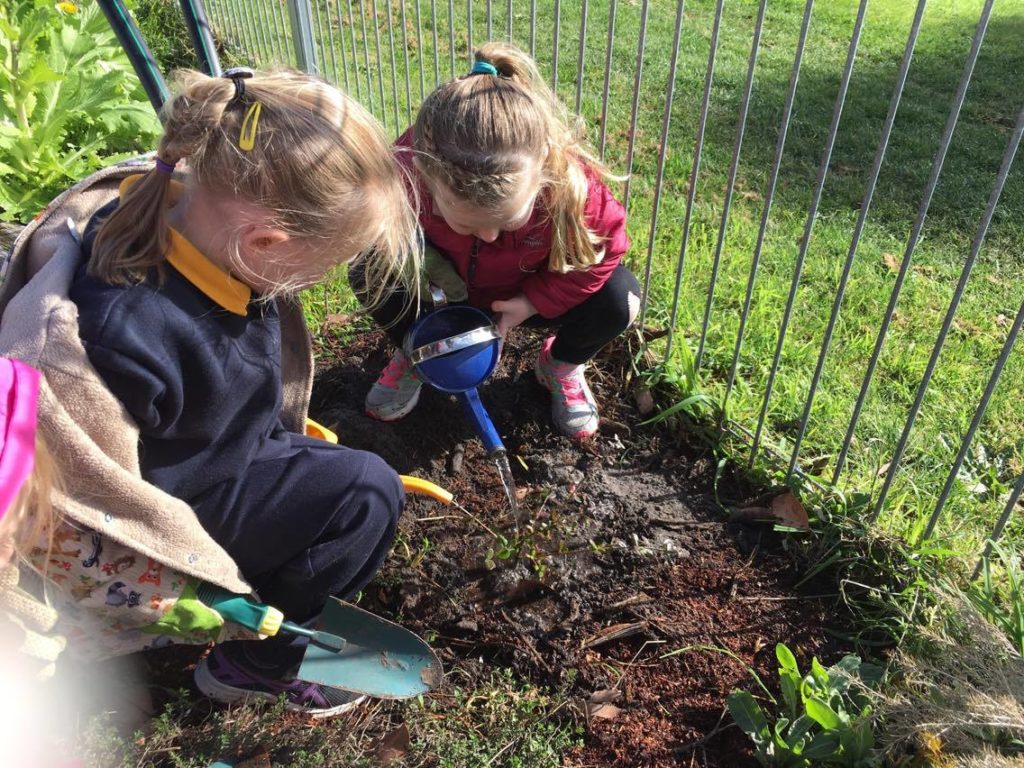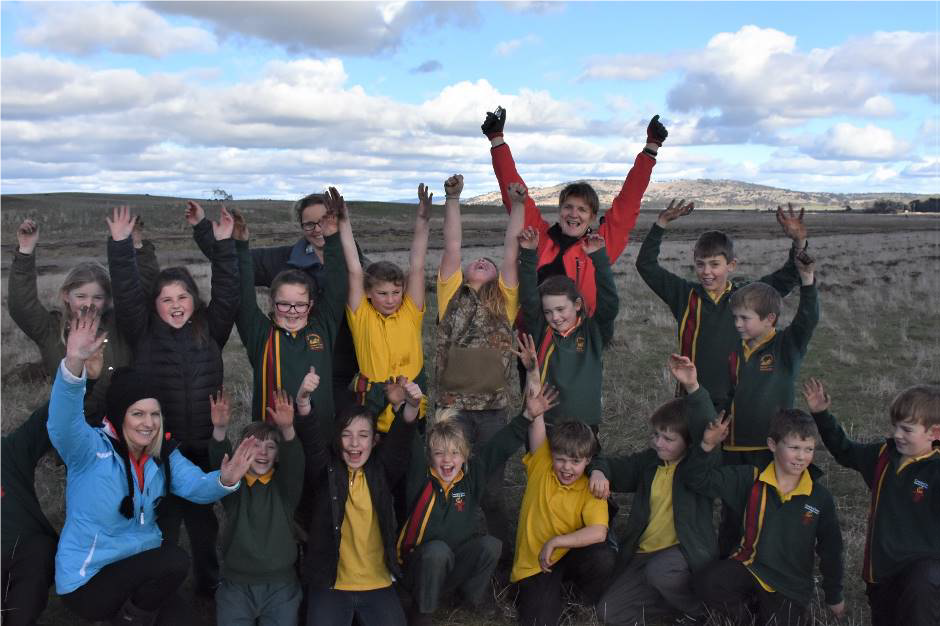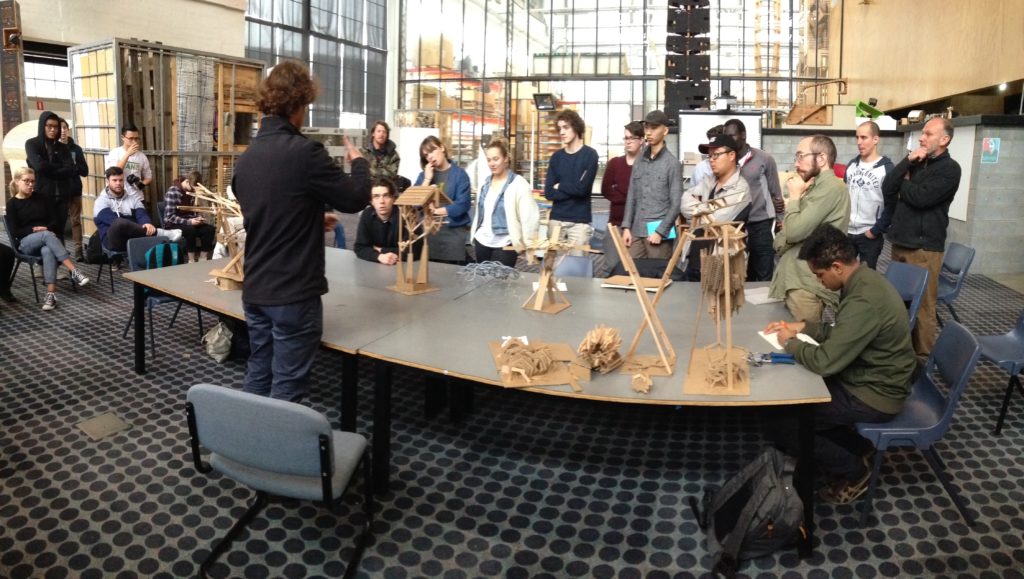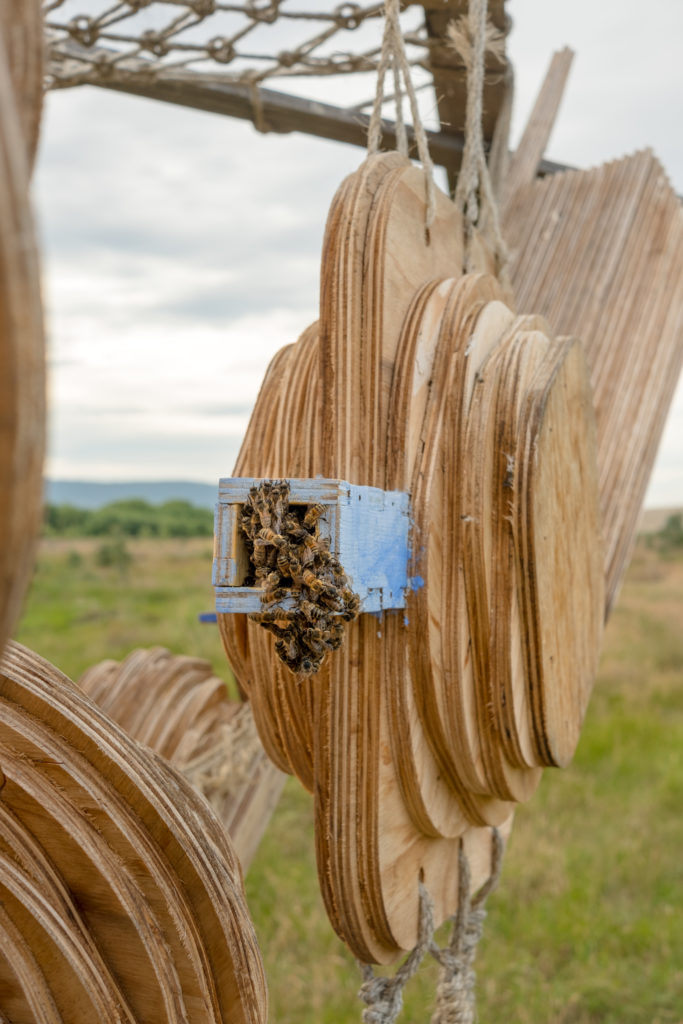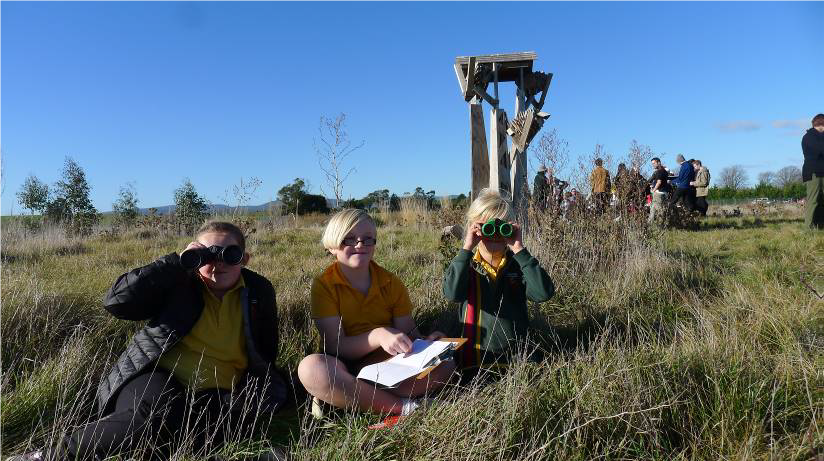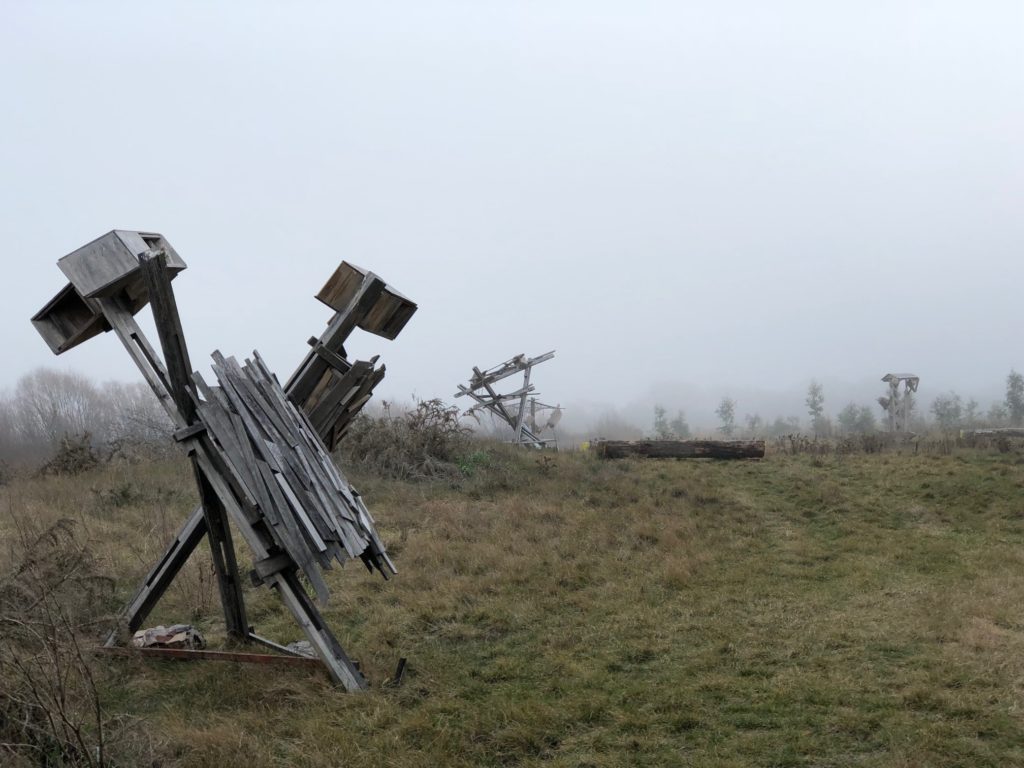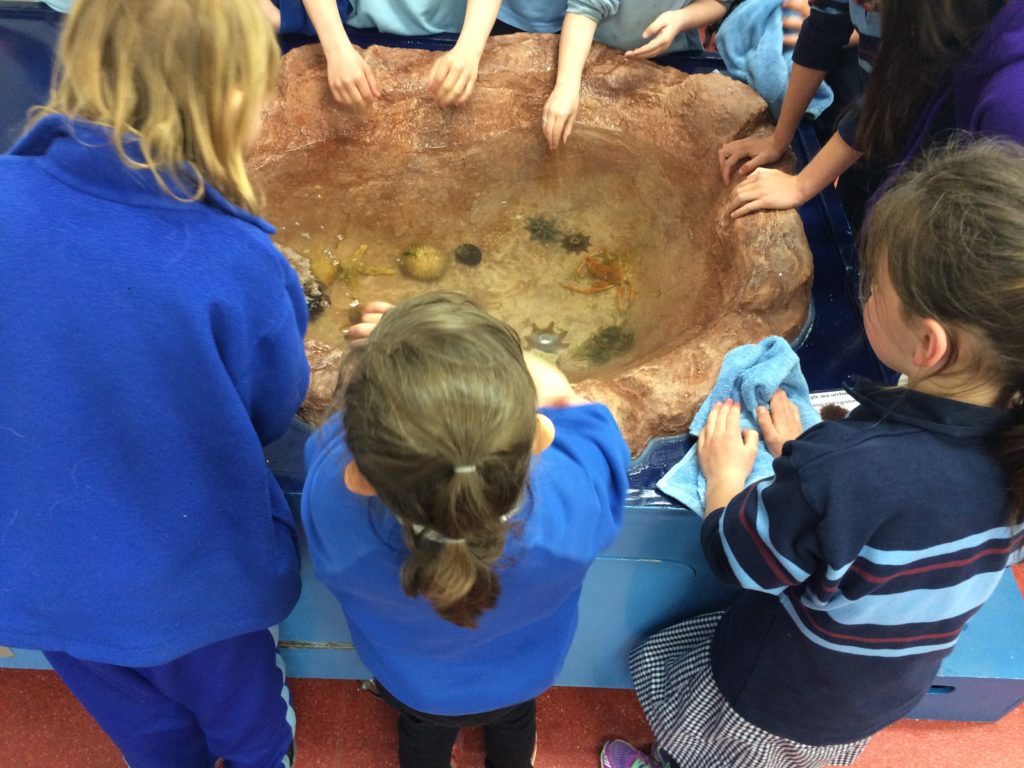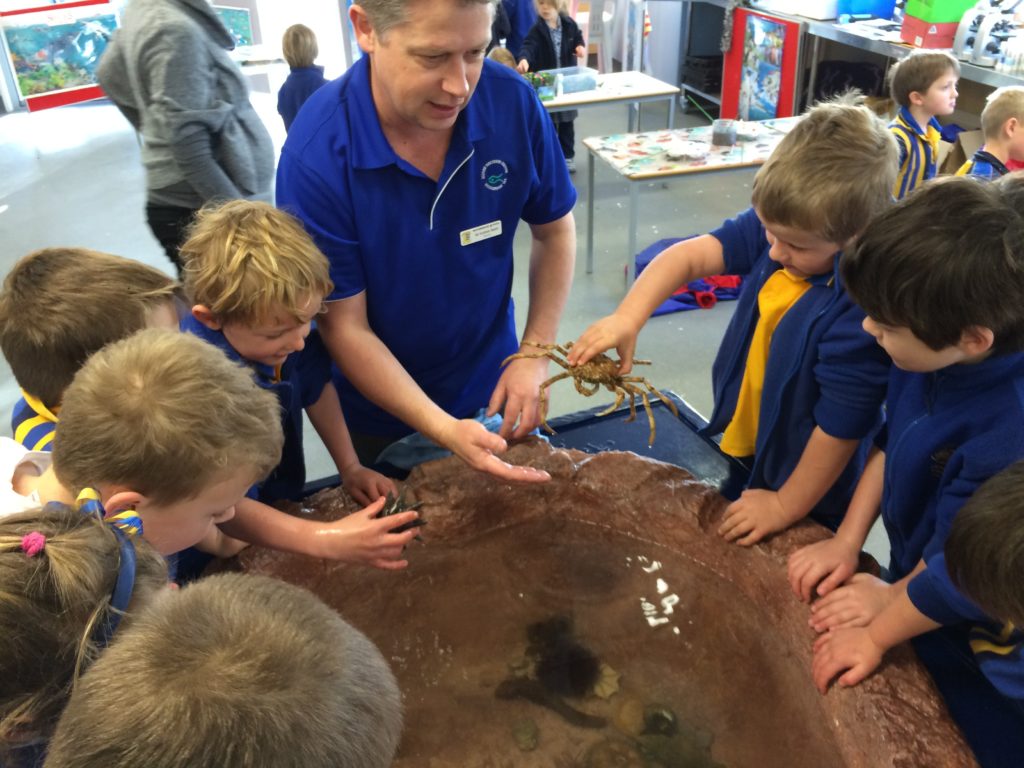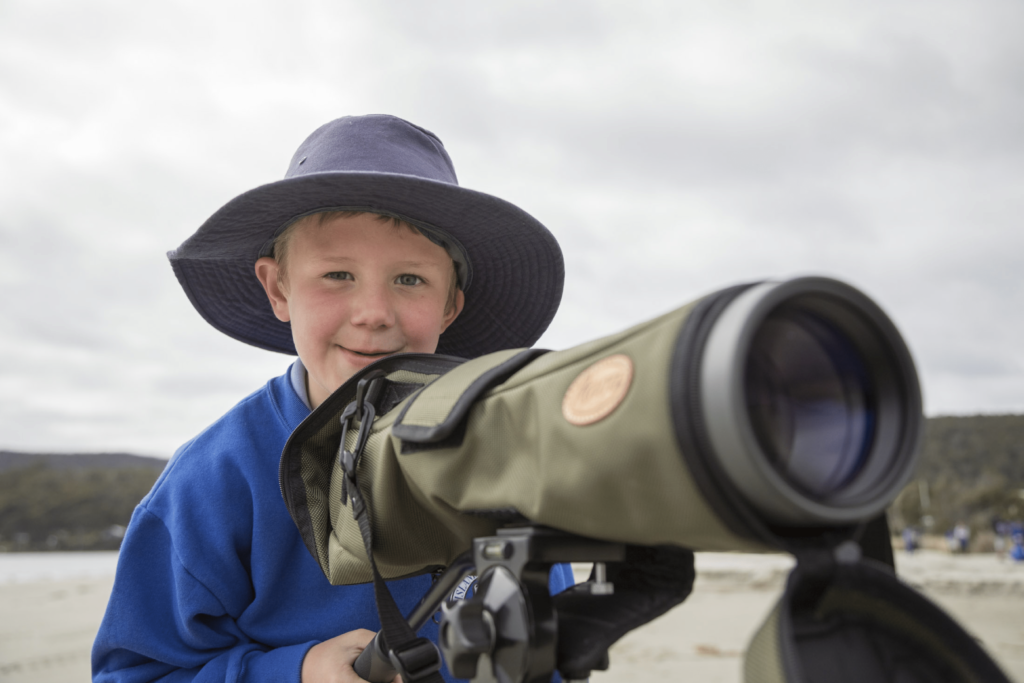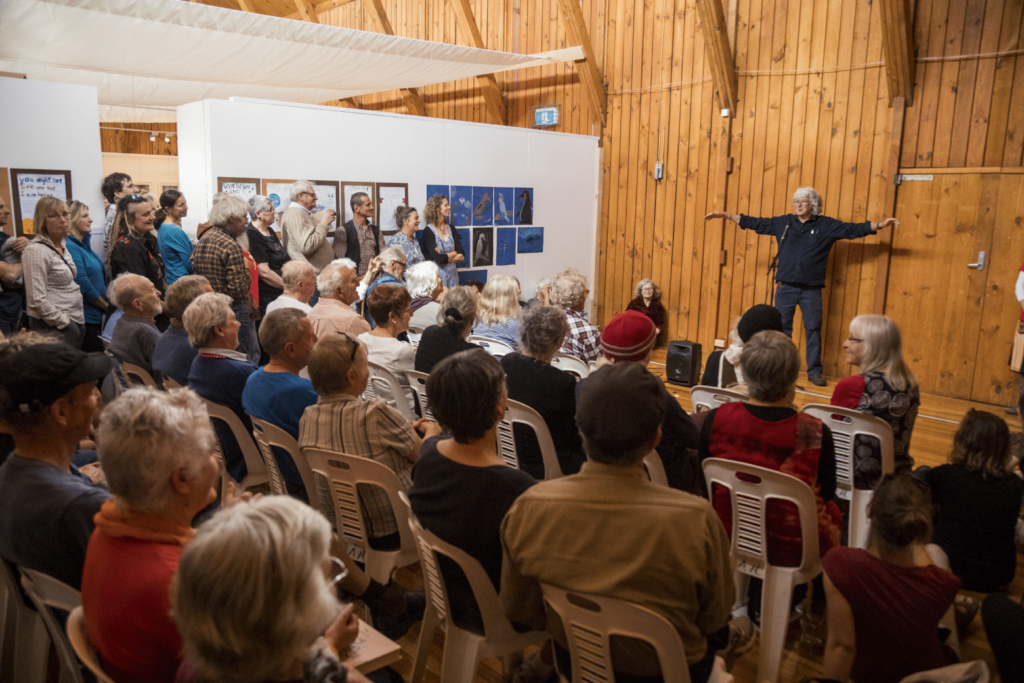Foundation for Rural & Regional Renewal (FRRR)
Greening Australia (Tas) is a leading environmental restoration organisation, restoring and conserving natural landscapes, producing clear, practical plans that allow people and wildlife to coexist. Their aim is to optimise greater understanding and involvement of Tasmania’s biodiversity hot spot through the running of conservation and artistic workshops for the community.
They received a $4,000 grant from the Small Grants for Rural Communities program, funded by the Yulgilbar Foundation for their ‘Hot Spot Snapshot’ program, which saw Greening Australia (Tas) run two activity field days at Cressy and Campbell Town, south of Launceston in Tasmania.
University researchers, restoration ecologists, artists and the school community came together to share their skills and knowledge with students from Oatlands and Campbell Town. More than 200 people participated in the Biodiversity Day at Oatlands; 70 people attended the Big Biodiversity Night Out at Merton Vale in Campbell Town, and this was followed by a BIG Day Out on 8 September at Ross with 30 Campbell Town Students working with 70 Architecture and Design Students from the University of Tasmania to build ‘Species hotels’, sculptural works to highlight the planted habitats for the threatened species in the Midlands Biodiversity Hot Spot. These will be established as a sculpture trail at Ross. Campbell Town students also planted 200 trees on a site next to the proposed Sculpture Park.
The grant was used to fund the purchase of wildlife cameras, video production, workshop materials, and travel for students as part of this collaborative community project.
More than 580 students in regional and rural Tasmania have reaped the rewards of a $5,000 grant received by the Woodbridge School and Marine Discovery Centre (MDC).
Woodbridge School & Marine Discovery Centre began operations in 1979 as a federally funded marine education facility. Its mission is to challenge students of all ages to learn, discover and care for the marine environment through diverse sea and shore based programs. Since 1997, it has been managed as part of Woodbridge School. All programs focus on practical, hands on experience which are linked directly to the curriculum. The organisation employs teaching staff (through Woodbridge School), a Ship Master, Education Facility Attendant and Admin Assistant.

Throughout the period February to September 2015, MDC teacher Andrew Walsh travelled more than 2100 km taking the roadshow to five primary schools and one secondary school, enabling 583 students to engage in hands-on marine science activities that are linked to the Australian Science Curriculum.The MDC was wanting to upgrade and expand the outreach of their travel program. They contacted a number of rural Tasmanian schools who had not participated either in the travel program or visited the centre before, to gauge their interest in having the MDC marine discovery incursion at those schools, and the response was positive. The REAPing Rewards grant, funded by the Ian Potter Foundation, covered travel expenses of the MDC’s teacher, the purchase of resources such as ice boxes and aerators to safely transport live touch tank animals, and a flat screen display to support the classroom presentation. The funds were also used to maintain the (sometimes leaky!) purpose-built touch tank constructed by MDC for travelling that contains a circulating filter pump and chiller.
MDC’s travelling roadshow a success
For each school visit, a day of packing at the MDC beforehand, and day of unpacking afterwards was required, in addition to the days of teaching at the school. Each class in the schools were given a block of time, around 1.5 hours, to spend in the MDC travel classroom. Activities included studying external invertebrate features and marine food webs, classifying animals, understanding marine pollution, and associated art activities.
The project was definitely a success in terms of demonstrating to, and impressing, the teachers as to the value of the program, as well as engaging many students who may not have had opportunities to have practical, hands on experiences to learn about marine ecosystems.
Principal of South Arm Primary School, Christine Farnell, said that it was a fantastic experience for their students, who especially loved examining the plankton under the microscopes and exploring the touch tank.
“Due to our distance from Woodbridge we are unable to make use of the Marine Discovery Centre, as the cost of buses and time for travelling impact us enormously, so without you and the FRRR grant this is an experience that our students would have missed. Thank you very much for your time and effort.”
A summer hotspot
Bruny Island is one of those places that people tell you to visit in Tasmania – the population of this spectacular island, only accessible by car ferry, swells from 700 to around 4,500 over the summer months. The local economy has made the move from a mixture of farming, orchards and timber harvesting to one based on ecotourism, niche food production, acquaculture and sheep grazing.
There’s more to this festival than feathers
The Bruny Island Environment Network (BIEN) was formed in 2009, and membership stands at 107. Its aim is to promote the biodiversity, cultural heritage and scenic values of the island, generate resources and support for their protection, support sustainable economic activity, provide information to landholders and the wider community about environmental and conservation issues, work together to address these issues and provide a framework for action regarding timber harvesting.
One of the group’s activities is the Bruny Island Bird Festival. The young festival, which held its inaugural event in 2010, required some infrastructure and equipment to help it gain momentum and achieve its educational aims.
The group was awarded a Small Grant of $1,093 for funding to purchase a 3m x 4.5m marquee that would be used as the key festival and visitor information booth.
Everyone joined in
The festival is a focal point for longer term education, art and conservation projects with local school children and various other community groups, including a photography and art competition that drew many participants. The Men’s Shed blokes built nesting boxes to sell, the CWA groups organised the market day, and catering and tourism operators and boutique food operators offered special guided tours, tastings and accommodation packages.
Not only would the festival be a boost to economic activity in an otherwise quiet period (late October) but it would help to fund the conservation activities of the BIEN and demonstrate the wonderful array of bird life and the potential for alternative uses of the South Bruny Forests to provide ecologically, economic and socially sustainable benefit for all.
Year round benefits
The event was a great success with around 400 registered attendees and accommodation on the island was nearly fully booked. Mr Graham said that they have seen a subsequent increase in the niche sector of bird related tourism. “The beauty is of course that the birds are here all year round, so once awareness is increased by events such as the festival, the benefits continue beyond that time.”
The marquee proved extremely handy – and was ‘invaluable in the smooth running of the festival’. Volunteers and businesses could direct people to the marquee for any assistance if they were not able to answer queries, and it was a point for patrons seeking last minute details of their booked tours. It has been used multiple times since the event and has proved a useful addition to the island’s community equipment.

